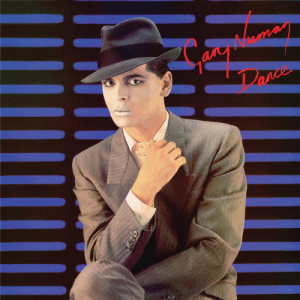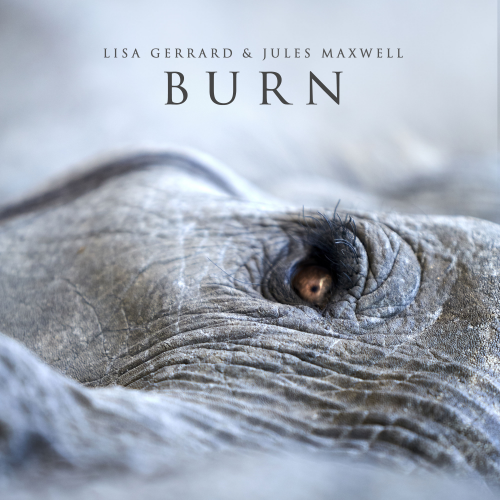 Dance was a change in direction for Gary Numan after four albums where he explored dark, cold electronic music, and he obviously thought it was time to move away from that area. This being 1981, it was only now that a lot of other popular artists were just beginning to explore Numan’s minimalist synth sound for themselves, and suddenly the UK charts were flooded with bands trying to emulate Numan’s sound and look. But there was also a change in the air as well; Japan were about to release their seminal album Tin Drum, which mixed scatter funk, world music and Karlheinz Stockhausen-style experimentation in to a musical hybrid still not heard again since.
Dance was a change in direction for Gary Numan after four albums where he explored dark, cold electronic music, and he obviously thought it was time to move away from that area. This being 1981, it was only now that a lot of other popular artists were just beginning to explore Numan’s minimalist synth sound for themselves, and suddenly the UK charts were flooded with bands trying to emulate Numan’s sound and look. But there was also a change in the air as well; Japan were about to release their seminal album Tin Drum, which mixed scatter funk, world music and Karlheinz Stockhausen-style experimentation in to a musical hybrid still not heard again since.
Its seems that Numan didn’t want to become stagnant and trade on his past sound too much, and seeing as at that point he had officially retired from playing live, it feels like he wanted to experiment more in the studio. So for Dance, Numan recruited two Japan members, Mick Karn and Rob Dean (Dean was latter to tour with Numan as a guitar player), alternative musician Nash The Slash and even Queen drummer Roger Taylor to help reboot his sound into something different.
The album begins with “Slowcar To China”, probably the most Japan-sounding song on the album, maybe because the track is covered with Mick Karn’s slippery fretless bass, but also because of its awkward chordal structure. The track sits like something from Brian Eno’s Another Green World, but with Numan’s distinctive vocals over the top. Like Japan’s songs at the time, the lyrics discuss the the idea of travel and love in an exotic way, like some new European version of travelling to faraway climes. This urban travel theme would be explored in a more popular way by Duran Duran. “Night Talk” sees Numan becoming slightly jazzy and minimal, and again it feels like he has used Eno as a reference point — but the track sorely misses his signature soaring synth of the earlier albums and sounds slightly listless, even though his chorus vocals do elevate the song. “A Subway Called You” is again filled with Karn’s mercurial bass lines and gives the feeling of being in a strange city in the rain. Numan’s synth patterns are really quite wonderful and atmospheric here, it’s just sad that the drums are buried so far down in the song and sound perfunctory, rather than challenging like Steve Jansen’s work in Japan.“Cry, The Clock Said” again takes a minimalist structure and borrows its sound slightly from Brian Eno and Jon Hassell’s Possible Musics. Here, though, we gradually hear Numan’s synth work coming to the fore more, with some rather beautiful ambient sounding playing that stretches into a fine melody but is somehow haunting at the same time. “She’s Got Claws” was the single released from the album and is the most obvious nod to Numan’s past product. A catchy number filled with his trademark synth sound and Karn’s superb bass and sax playing, it was no wonder it was a hit and probably got fans salivating over what the album would sound like. In truth, the song sticks out on the album as its only real concession to being pop in any way. “Crash” mixes the old big synth sound with some atonal instrumentation, but again harks more to Numan’s preceeding work than the rest of the album does.
“Boys Like Me” again borrows from Japan’s sound, but this maybe because it features two members of that band. It has a slightly strange funk about it, with Rob Dean’s guitar work soaring over the top and creating an alternative melody in places. It suddenly becomes very clear that Numan’s vocals don’t want to rely on typical rock motifs, and like David Bowie on Low, he is trying in some way to reinvent his vocal sound. “Stories” was a song that Numan would carry on playing live long after most of the pieces on this album were discarded as gig material. Its probably the most straight forward melody on the LP, but strangely the one that seems most trapped in that sound of the early eighties, though that could be just down to the drum machine. The sombre piano gives a more introspective feel on “My Brother’s Time” and seems to borrow from one of Numan’s favourite composers, Erik Satie, and does have a little touch of Japan’s “Nightporter” about it too.“You Are, You Are” has an almost danceable sensibility about it, so is probably one of the few tracks on the album to live up to the LP’s title. “Moral” gives Numan a chance to vent his spleen at probably half the people buying his records at the time. ‘These New Romantics are oh so boring”, he croons, but seeing as he almost helped invent this phenomenona at the time, I suppose we can forgive him for looking at the clones with a sense of detachment at this point. The song hardly ends the album on a high note though, so many listeners at the time were probably scratching their heads as the needle hit the run-off groove.
At the time of release the album was rather divisive amongst Numan fans. Some were willing to move with him into his new sound (and new look for that matter), while some still wanted him to return to his Pleasure Principal days. If this, as was later claimed, to be Numan’s Low / Heroes album, it’s interesting that Dance forgoes any instrumental pieces in favour of the song cycle. Mick Karn’s bass dominates the album as well, so it was always going to be compared to Japan’s output at the time as they painstakingly pieced together their LP. To my ears all these years later, I really like it, because it reminds me of not only Japan and Berlin-era Bowie, but again because that sense of travel and a certain amount of exoticness about it.This beautiful purple vinyl reissue comes with five extra tracks recorded at the same time: “Stormtrooper In Drag” (which would have made a great single), “Face To Face”, “Dance”, “Exhibition” and “I Sing The Rain”. The album is spread across two LPs, which improves greatly on the sound of the original vinyl issue, which sounded somewhat muddy. It also has a fantastic restored artwork and a gatefold sleeve as well. This really is a must-have for any Numan collector, and is obviously produced with love for its project. Now you can hear Dance as it was meant to sound in all its travelogue glory.
-Gary Parsons-




One thought on “Gary Numan – Dance”
Stormtrooper in Drag was a single